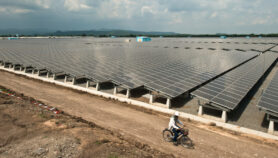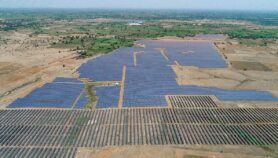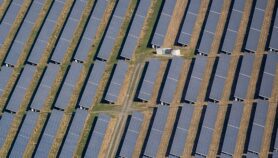By: Prime Sarmiento
Send to a friend
The details you provide on this page will not be used to send unsolicited email, and will not be sold to a 3rd party. See privacy policy.
[MANILA] The Philippines has launched the largest electric public transport fleet in South-East Asia with its first commercial franchise of electric jeepneys (e-jeepneys) — an environmentally friendly version of a popular vehicle originally made from US military jeeps left over from World War II.
The move, which took place at the beginning of this month (1 March), is being seen as helping to pave the way for all countries in the region to accelerate their shift to more eco-friendly mass transport systems.
Other countries in South-East Asia are already working on their own versions of public transport system that will reduce carbon emissions and improve air quality.
Singapore, for example, is testing a hydrogen-powered public bus, and is working with German researchers to develop electric taxis, with the initial prototype expected in 2014. And Thailand is looking into electric tuk tuks to replace the motor-powered three wheeled vehicles that roam Bangkok’s busy streets.
Diesel-powered jeepneys are the most popular public transportation in the Philippines, and have become a symbol of Philippine culture. But, with some 50,000 jeepneys — many of them widely seen as ‘smoke-belchers’ — on the streets of Metro Manila alone, studies have tagged them as one of the biggest sources of air pollution in the country.
Now, under a franchise to operate and cover a particular route, a 21-vehicle fleet of e-jeepneys is plying the streets of a section of the business district of Makati City, the country’s main financial district, charging the same fare as traditional jeepneys.
"This is the first step towards a long-term solution to the country’s air pollution problems," said Yuri Sarmiento, chief executive officer of franchise holder, Ejeepney Transport Corp.
The first locally produced e-jeepney was launched in 2008, and started to transport passengers for free in Makati in 2009. Red Constantino, director of climate policy at the non-governmental organisation Institute for Climate and Sustainable Cities (iCSC), said the group took several years to get a franchise from the government and commercialise operation.
The iCSC secured funding from the UK government through its South-East Asia Prosperity Fund to build and operate the first e-jeepney fleet battery swapping station, which Constantino said is the key to making the operation of e-jeepneys commercially viable.
At the battery station, an e-jeepney goes into a loading bay where the spent battery is taken off and replaced with a charged one. The entire process takes about ten minutes. A fully charged jeepney runs for eight hours, and charging batteries can take six to eight hours.
Replacing spent batteries with fully charged ones costs 220 pesos (about US$5) and allows 115 kilometres of travel, according to iCSC. In comparison, a driver of a diesel-fed jeepney would have to pay more than 1,200 pesos (more than US$28) to cover the same distance.
Furthermore, according to Constantino, each e-jeepney avoids discharging more than 62 kilogrammes of carbon dioxide exhaust emission each day.
The iCSC is now working to expand the e-jeepney to three other cities and is negotiating with local governments to provide routes, and entrepreneurs to provide the battery charging stations.













